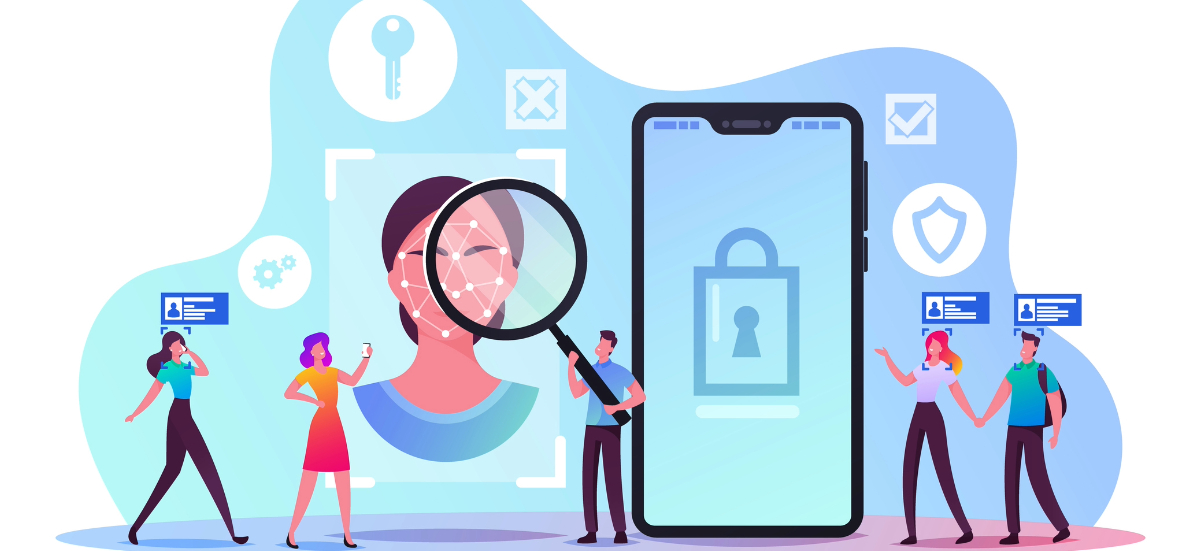Identity Verification vs. Identity Authentication: Unveiling the Differences and Benefits

In the digital age, where online transactions and interactions have become the norm, safeguarding personal information is critical. Identity verification and identity authentication are two processes that play a crucial role in ensuring the security and integrity of sensitive data for you and your customers. While these terms may seem interchangeable, they serve distinct purposes. This article will explore the differences and benefits of ID verification and ID authentication.
Understanding Identity Verification
Identity verification is the process of confirming an individual's presented identity information matches the data on record. It is the first step in verifying whether a person is who they claim to be. The primary goal of ID verification is to prevent fraud, identity theft, and unauthorized access to sensitive information.
While there are forms of traditional in-person ID verification, digital advancements have brought about new innovative solutions. The following methods enhance security and provide a seamless user experience, especially in the context of online services and applications:
- Knowledge-based authentication
- Two-factor authentication (2FA)
- Credit bureau-based authentication
- Database methods
- Online verification
- Biometric verification
Learning more about the pros and cons of these methods is imperative as they each provide a unique role in the ID verification process.
Benefits of Identity Verification
- Enhanced Security: Identity verification ensures that only legitimate users gain access to sensitive information or services, minimizing the risk of unauthorized access and fraud.
- Compliance: Many industries, such as finance, healthcare, and e-commerce, are legally bound to comply with strict Know Your Customer (KYC) and Anti-Money Laundering (AML) regulations.
- Fraud Prevention: By verifying the authenticity of users, businesses can significantly reduce the likelihood of fraudulent activities, protecting both themselves and their customers.
- Streamlined User Experience: Modern identity verification methods, like biometrics and 2FA, offer a user-friendly experience, eliminating the need for manual document submission and verification delays.
- Improve Reputation: Demonstrating to customers that their data is safe is crucial to a company's success. Customers will likely switch to a different company if a business fails to meet its customers' needs or provide satisfactory service.
Understanding Identity Authentication
Identity authentication is the process of verifying the legitimacy of a user's identity during or after the verification process. Unlike identity verification, which focuses on confirming ID information, authentication involves validating the user's claimed identity through various mechanisms. The following authentication methods aim to prove that the user is indeed the legitimate owner of the verified identity:
- Password-based authentication
- Multi-factor authentication
- Certificate-based authentication
- Biometric authentication
- Token-based authentication
While you may see some similarities between ID authentication and ID verification, remember that the point behind this method is determining whether the person attempting to access an account is authorized.
Benefits of Identity Authentication
- Enhanced Access Control: Authentication mechanisms ensure that only authorized individuals can access specific systems, applications, or data, reducing the risk of unauthorized use or data breaches.
- Prevent Unauthorized Access: By requiring a unique identifier or verification token, authentication significantly reduces the chances of imposters gaining access to user accounts or sensitive information.
- Data Protection: Identity authentication helps safeguard sensitive data from unauthorized users, preventing potential financial losses and reputational damage.
- Compliance with Industry Standards: Many regulatory frameworks mandate robust authentication practices to protect user data, making authentication essential for compliance.
What Can You Do to Safeguard Your Data?
Identity verification and identity authentication are two fundamental components of modern cybersecurity. Both processes complement each other and play a pivotal role in safeguarding sensitive information, preventing fraud, and providing a secure online experience.
Organizations must implement a comprehensive identity management system that combines both verification and authentication methods to achieve optimal security levels while providing a seamless user experience. That's why MicroBilt offers a suite of ID verification and authentication tools to reduce the risk posed to your business.
Striking the right balance between security and user convenience will be key to building trust and confidence in digital interactions and transactions in the increasingly interconnected world.
